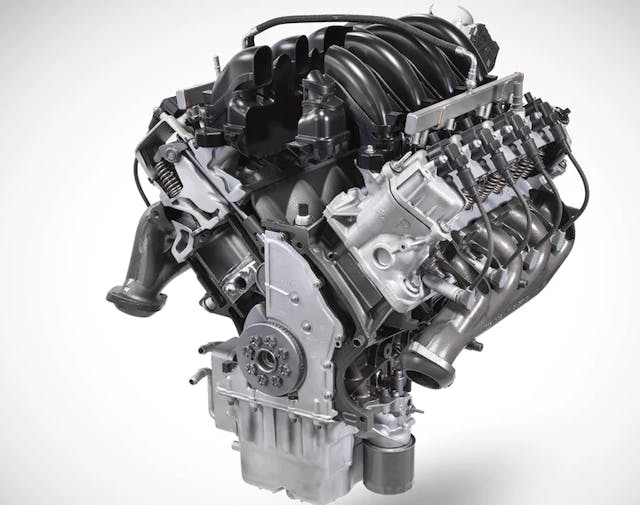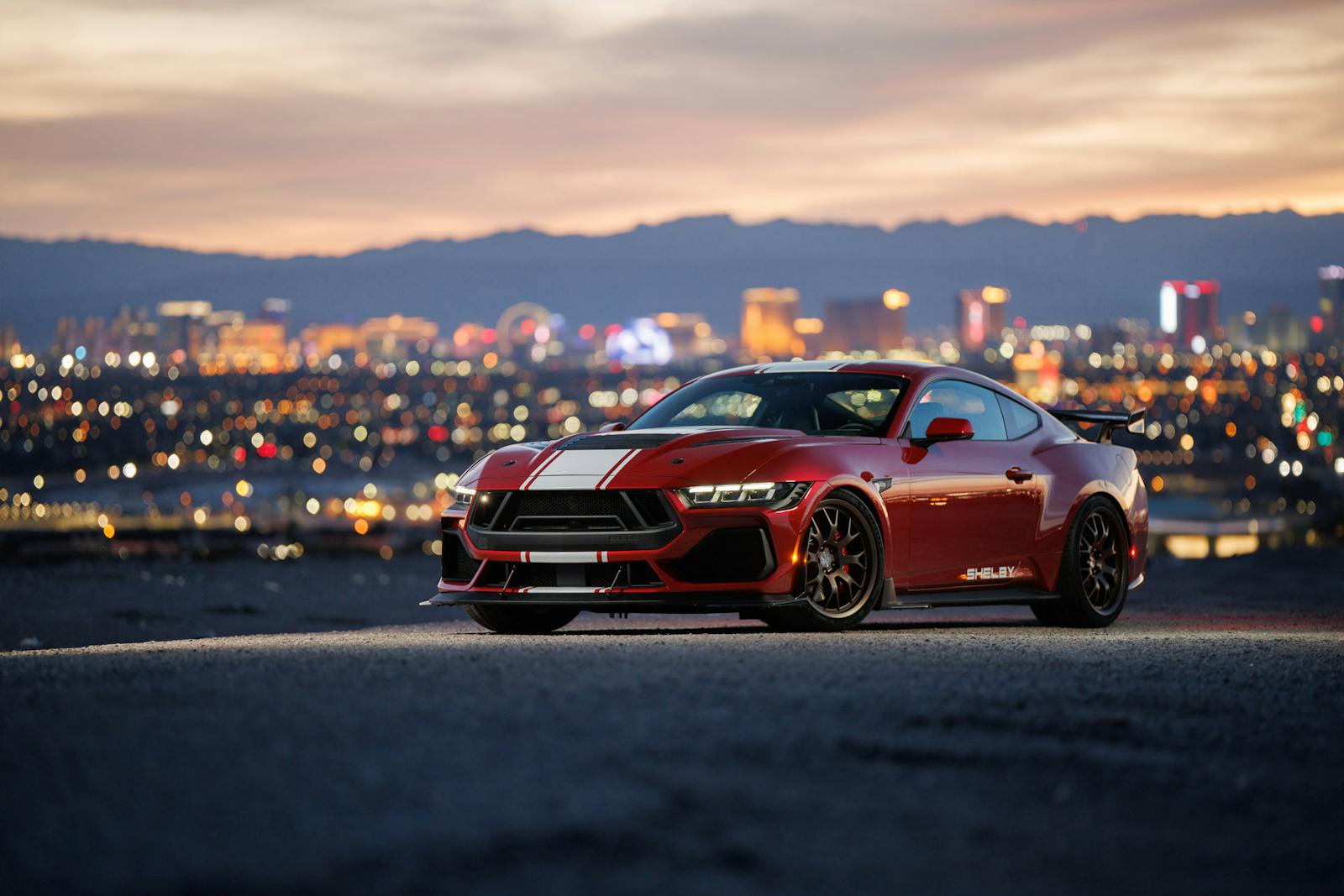Coyote Ugly: Is Ford reverting to Windsor V-8s with pushrod power?

We interrupt your newsfeed’s stream of overpriced electric cars, self driving gadgetry, and any other hype present in an election year to inform you that FoMoCo is installing a 6.8-liter Windsor V-8 under the hood of the upcoming 2022 Ford F-150 and Mustang.
Consider what we know so far:
- Ford reached a three-year contract with Unifor (the Canadian trade union) to make “6.8-liter engines” in its famous Windsor engine plant. They didn’t specify the cylinder count, but come on—it’s gonna be a V-8 if it’s that big.
- This contract states that Windsor engines are intended for the aforementioned Mustang and F-150, both of which currently use the Coyote V-8 (made in nearby Essex).
- The 6.8-liter Windsor is likely related to the 7.3-liter “Godzilla” V-8, since that’s the big-block Ford is currently producing.
This agreement also includes battery production for yet-to-be-determined electric vehicles, which is, like, theoretically great. Let’s focus on why this new Windsor mill is gonna be big for enthusiasts, and why it has little to do with the previous Windsor powering the dreams of Ford fanatics for 40+ years.
Expect the 6.8-liter Windsor to be overhead-valve (OHV) like the small-block Ford or GM’s LS-series and FCA’s Hemi V-8 engines. We could spend hours debating the pros and cons of OHV versus OHC, but the point is moot considering the power available from the competition’s big-bore, two-valve pushrod powerplants. Look for the 6.8-liter Windsor to be a de-stroked 7.3 Godzilla. It’ll likely ditch the Godzilla’s iron block and go all aluminum: Who wants an F-150 with an aluminum body and an iron engine?
Naysayers or devil’s advocates may suggest the Coyote isn’t dying; it’s simply being enlarged to 6.8 liters while moving to a new plant. That’s unlikely, since the “old” Coyote shares the same bore spacing as the 4.6-liter Modular V-8. Even the aftermarket (which operates free of warranty and emissions concerns) can’t punch out a Coyote much bigger than 5.5 liters, so getting to 6.8 liters likely necessitates adding two cylinders. Wait one second, how big was Ford’s Modular V-10 again?

If the writing’s indeed on the wall for the Modular V-8, it was a great run. Former Ford CEO Donald Petersen ushered in a new era of engines that benchmarked Europe’s finest OHC and DOHC V-8s but sold them in cars costing a fraction of the price: There was surprising refinement at first (1991 Lincoln Town Car), ending with mind-altering Coyote power in both the GT350 and GT500.
However, the Modular’s blueprint started losing its luster once the notion of LS1-FTW became a thing on the Internet. Indeed, the competition’s current crop of pushrod V-8s implies that Ford needs to step up its game to keep both the Mustang and the F-150 on top. Who wants a turbocharged V-6, or even a Coyote Raptor, when there’s a big-bore Hellcat TRX? An extra 1.8 liters of Windsor power surpasses the competition’s standard offerings—and you can bank on supercharging being in the works. This new engine lineup is likely to blow some minds.
Is 2022 the year Ford’s overhead-cam dreams come to an end? Let’s hope so, because the future is bright thanks to the return of the pushrod Windsor V-8.


I guess I’m going to be the pedantic one who just has to point out that none of the large engines called “big bore” in this article *really* qualify for that term (except the Godzilla which is borderline). The rest are all large displacement smallblocks and get their displacement with stroke. To me, a truly “big bore” engine is one with a bore center spacing over 4.6”, thus allowing bore diameters of 4.25” or more. Things like the 426 Hemi (4.25” bore), Chrysler 440 (4.32”), Buick 455 (4.31”), Chrysler 400(4.34”) (Ford 429/460 (4.36”), and Chevy 427/454 (4.25”). The Godzilla might qualify at 4.22” bore, but the bore spacing of 4.5” is right on the edge. The Hellcat is definitely a smallblock at 4.1” bore on a 4.46 spacing, as are all versions of the LSx. But good for Ford on keeping the big-displacement dream alive, especially with the smaller packaging allowed with pushrod/cam-in-block engines.